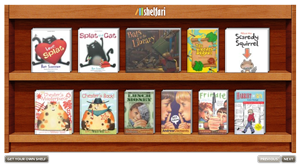 Each year, I look forward to my annual physical for one reason: My doctor is an avid reader. Without fail, when I visit her office we talk as much about what we’ve been reading as we do about my health. This year was no different. During the past month, she had finished The Art of Hearing Heartbeats by Jan-Philipp Sendker and said she couldn’t put the book down. Within the week, I found myself mesmerized by this story of a young woman’s quest to explain her father’s disappearance, prompted by my doctor’s suggestion, leading me to a book I would not likely have encountered on my own.
Each year, I look forward to my annual physical for one reason: My doctor is an avid reader. Without fail, when I visit her office we talk as much about what we’ve been reading as we do about my health. This year was no different. During the past month, she had finished The Art of Hearing Heartbeats by Jan-Philipp Sendker and said she couldn’t put the book down. Within the week, I found myself mesmerized by this story of a young woman’s quest to explain her father’s disappearance, prompted by my doctor’s suggestion, leading me to a book I would not likely have encountered on my own.
So it is with book recommendations. We typically learn of selections we love from other readers whose interests we share. Although youngsters might rely on parents and teachers for reading choices, valuing what peers read takes place late in elementary school and solidifies in adolescence. For those who read avidly, reliance on the reading opinions of friends and acquaintances rarely wanes, even into adulthood. Struggling readers, too, are much more likely to pick up a selection recommended by a peer. Employing the use of Web tools, one’s own peer circle broadens when linked to a virtual audience with more diverse experiences, greatly increasing the likelihood that a reading suggestion will strike a chord with a reader and prompt a connection with a perfect book, series, author, or genre.
Savvy teachers build upon the power of reading recommendations. Although face-to-face conversations about favorite selections can serve as powerful reading motivators for many students, social cataloging websites allow readers to connect, share, discuss, and archive their reading suggestions within and beyond their school settings. Online book communities such as Goodreads and LibraryThing appeal to older readers, offering possibilities for secondary students or teaching colleagues to catalog book selections, form groups, share reviews, and discuss favorites. Shelfari builds virtual bookshelves for readers at all levels, displaying books read in addition to books of interest. Groups can be created, discussions organized, and recommendations sent to other users, making the site friendly for classroom or small book group use. Bookjetty moves beyond the typical reach of most social book cataloging websites with its capability to search for book titles at more than 300 public, school, and university libraries. Although the site includes book selections for readers of all ages, Bookjetty allows users to share what they are reading on Facebook and Twitter, a feature that may dictate cautious use in some school settings.
Public library systems, such as Sheppard Memorial Library, are building on the power of shared reading interests by integrating “read-alike” suggestions within their online catalogs via book recommendation databases such as NoveList. SML Director of Libraries Greg Needham says users have benefitted tremendously from the library’s “if you like this” website feature, which mimics familiar services offered by Amazon and Barnes & Noble. Available 24/7 from any computer or mobile device, library patrons report finding “more of what they are looking for” in addition to “terrific reads they didn't know they were looking for.” Availability of reader advisory features within virtual library resources is one of many reasons that forging stronger connections between school students and public libraries is worth continuing attention.
Finally, North Carolina State University Libraries’ The Best Book I Read This Year blog is worth mention, as it features students, alumni, faculty, and staff members who recommend their favorite reads of the year. Although this site likely has limited utility in school settings, it offers a fine model for creating similar classroom or school blogs saluting its own students, teachers, and selected guests as experts whose suggestions have value and the potential to guide and influence other readers.
 Terry S. Atkinson is associate professor in the Department of Literacy Studies, English Education, and History Education at East Carolina University in Greenville, NC. This article is part of a series from the International Reading Association’s Technology in Literacy Education Special Interest Group (TILE-SIG).
Terry S. Atkinson is associate professor in the Department of Literacy Studies, English Education, and History Education at East Carolina University in Greenville, NC. This article is part of a series from the International Reading Association’s Technology in Literacy Education Special Interest Group (TILE-SIG).